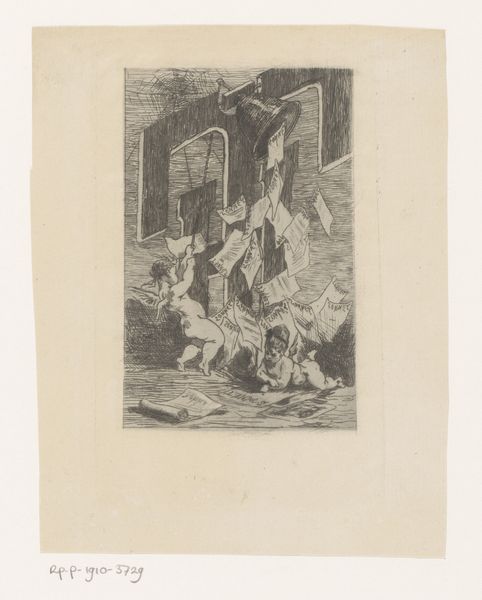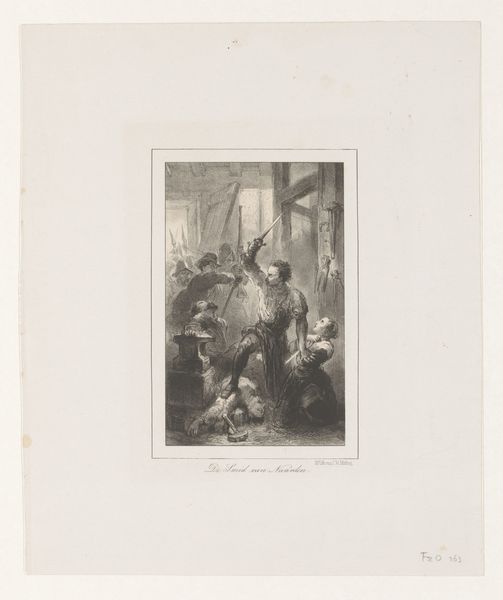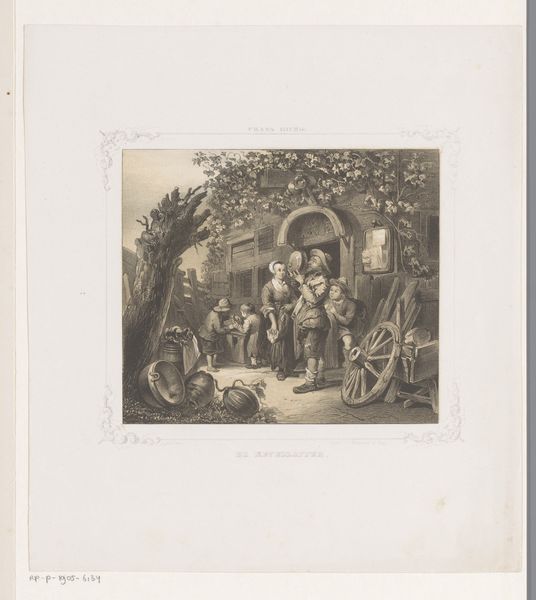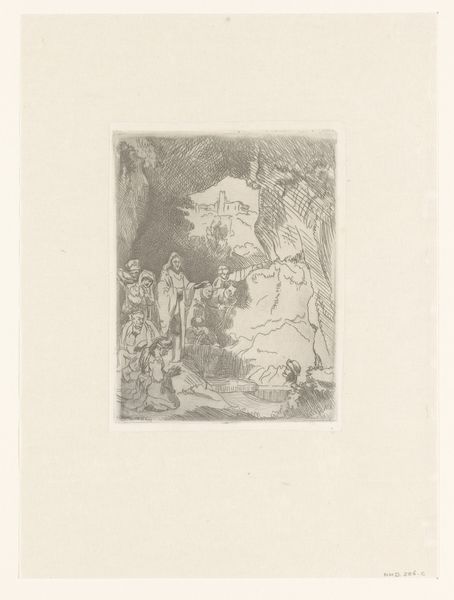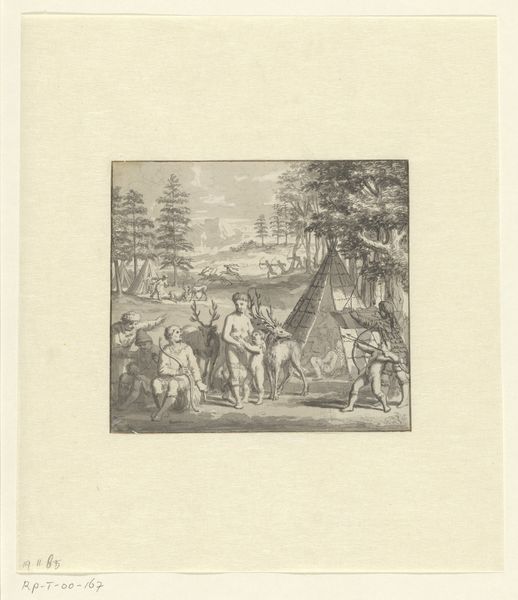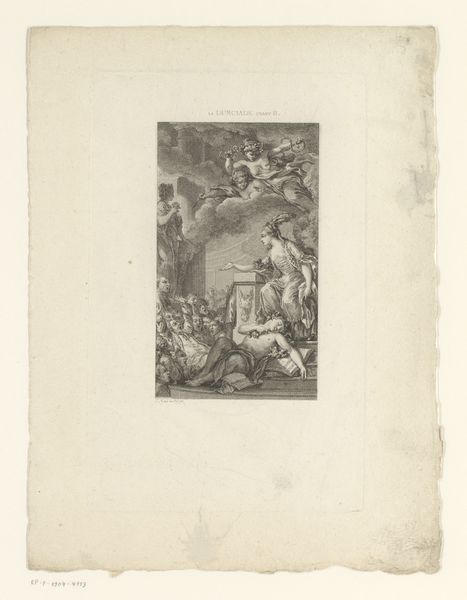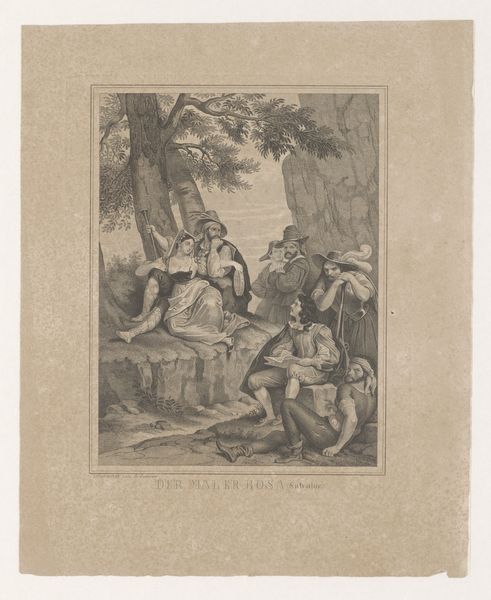
drawing, print, engraving
#
drawing
# print
#
landscape
#
figuration
#
romanticism
#
engraving
Dimensions: Sheet: 12 5/8 × 9 1/4 in. (32.1 × 23.5 cm) Image: 7 15/16 × 5 1/4 in. (20.1 × 13.4 cm)
Copyright: Public Domain
Editor: This is Henri-Charles-Antoine Baron's "A Siesta in Italy" from 1842, a print and drawing also using engraving techniques. It’s held in the Metropolitan Museum of Art. I’m struck by how theatrical it feels, almost like a stage setting with all these different figures arranged so precisely. What kind of commentary do you think Baron is making here? Curator: The theatricality is key, especially considering how Italy functioned within the European imagination during the Romantic period. It was often portrayed as this picturesque backdrop, almost a stage set, for leisure and aristocratic pursuits. But there's a socio-political current running beneath the surface. Editor: In what way? Curator: Look closely. There's a distinct class division depicted, right? We have what seems like nobility in the upper tier, removed from the working-class figures occupying the foreground. What does this deliberate juxtaposition suggest to you? Editor: It definitely creates a sense of separation. The upper class seems almost oblivious, maybe even benefiting, from the labor happening below. The architecture itself emphasizes that divide. Curator: Precisely! Baron's image can be interpreted as a critique of the social hierarchies prevalent at the time. He’s playing with the romantic ideal of Italy, and simultaneously revealing the realities of its class structures and perhaps even the exploitation inherent in the Grand Tour experience itself. The museum, by exhibiting this work, participates in a contemporary discussion about how we view these historical power dynamics today. Editor: I never thought of the museum’s role in that way. That's really insightful! It adds so many layers to what seemed like just a simple, idyllic scene at first glance. Curator: Absolutely! The “idyllic” scene is constructed and its reception over time influenced by prevailing cultural narratives, institutional structures, and evolving social consciousness. Editor: Thanks so much! Now I see it less as a pretty picture and more as a political statement. Curator: Glad to share. That’s exactly the point – seeing beyond the surface and understanding art's embedded role in larger societal narratives.
Comments
No comments
Be the first to comment and join the conversation on the ultimate creative platform.

